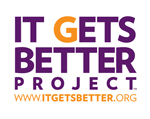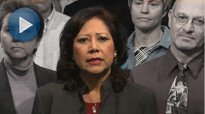Strengthening Protection Against Discrimination
Equal Pay
![]()
The first piece of legislation President Obama signed into law was the Lilly Ledbetter Fair Pay Restoration Act, which empowers women to recover wages lost to discrimination by extending the time period in which an employee can file a claim. The President continues to advocate for passage of the Paycheck Fairness Act, common sense legislation that would give women additional tools to fight pay discrimination. And President Obama convened a National Equal Pay Task Force to ensure that existing equal pay laws are fully enforced. The Task Force has helped women recover millions in lost wages, built collaborative training programs that educate employees about their rights and inform employers of their obligations, and facilitated an unprecedented level of inter-agency coordination to improve enforcement of equal pay laws.
In April 2014, the President signed two executive actions strengthening equal pay laws: an Executive Order prohibiting federal contractors from retaliating against employees who choose to discuss their compensation and a Presidential Memorandum instructing the Secretary of Labor to establish new regulations requiring federal contractors to submit summary data on compensation paid to their employees, including data by sex and race. The Department of Labor will use the data to encourage compliance with equal pay laws and to target enforcement more effectively.
Protecting LGBT Individuals from Discrimination
![]()
Since taking office, the President has demonstrated that his vision for a brighter future includes greater equality for LGBT Americans. The President and his Administration are dedicated to eliminating barriers to equality, fighting discrimination based on sexual orientation and gender identity, and engaging LGBT communities across the country.
Highlighted achievements include:
- June 2009: Issued a directive on same-sex domestic partner benefits, opening the door for the State Department to extend the full range of legally available benefits and allowances to same-sex domestic partners of members of the Foreign Service sent to serve abroad. OPM also expanded federal benefits for same-sex partners of federal employees and allowed same-sex domestic partners to apply for long-term care insurance.
- October 2009, President Obama signed the Matthew Shepard and James Byrd, Jr., Hate Crimes Prevention Act into law, extending coverage of federal hate crimes law to include attacks based on the victim’s actual or perceived sexual orientation or gender identity—the first federal civil rights legislation to include “sexual orientation” and “gender identity.”
- March 2010: The Affordable Care Act funds preventive efforts for communities, and is making other investments that will help address health disparities. Through increased research and data collection on health disparities, policymakers will have the knowledge and tools they need to continue to address the health needs and concerns of the LGBT community.
- April 2010: The Department of Health and Human Services (HHS) now requires all hospitals receiving Medicare or Medicaid funds to allow visitation rights for LGBT patients. The President also directed HHS to ensure that medical decision making rights of LGBT patients are respected.
- December 2010: The President signed the Don’t Ask, Don’t Tell Repeal Act of 2010 into law, allowing gay men and women to serve openly and with integrity in the U.S. military.
- February 2011: The Administration announced it would cease legal defense of the Defense of Marriage Act’s provision defining marriage as only between a man and woman.
- February 2013: The Veterans Health Administration (VHA) issued a Directive to specify care that is available to transgender veterans through VA benefits. The VA also launched an LGBT Veteran welcoming outreach campaign and established several new psychology postdoctoral fellowships specializing in LGBT health.
- February 2013: President Obama signed the VAWA reauthorization with important new provisions to protect LGBT victims of violence.
- June 2013: The Administration announced the first ever national study of discrimination in housing against LGBT persons and proposed new regulations to ensure that housing programs are open to all persons regardless of sexual orientation or gender identity.
- June 2013: After the United States v. Windsor decision, in which the Supreme Court struck down Section 3 of the Defense of Marriage Act as unconstitutional, the President instructed the Cabinet to review all federal statutes to ensure the decision was implemented swiftly and smoothly. After concluding its review, the Justice Department announced that in almost all instances it will extend benefits to same-sex married couples.
- March 2014: The Community Relations Service at the Department of Justice released a new training module for law enforcement professionals who interact with and protect transgender persons who may be victimized by crime.
- July 2014: The President signed an Executive Order prohibiting federal contractors from discriminating against any employee or applicant for employment “because of race, color, religion, sex, sexual orientation, gender identity, or national origin,” continuing to set an example as a model employer that does right by its employees.
- December 2014: The Attorney General released “Guidance for Federal Law Enforcement Agencies Regarding the Use of Race, Ethnicity, Gender, National Origin, Religion, Sexual Orientation, or Gender Identity” which prohibits profiling based on sexual orientation or gender identity by federal law enforcement or local law enforcement working on federal task forces.
It Gets Better

President Obama and White House staff recorded video messages to give hope and support to young people who are being bullied or harassed because of their actual or perceived sexual orientation or gender identity. Watch the videos and find resources for youth below.
Watch More Videos from Current and Former Administration Officials
More videos
U.S. Department of the Interior: It Gets Better
Resources
If you’re a young person who’s been bullied or harassed by your peers, or you’re a parent or teacher who knows a young person being bullied or harassed, here are a few resources that can help you:
The Trevor Project
The Trevor Project is determined to end suicide among LBGTQ youth by providing resources and a nationwide, 24 hour hotline. If you are considering suicide or need help, call: 866-4-U-TREVOR (866-488-7386).
BullyingInfo.org
BullyingInfo.org is a project of the Interagency Working Group on Youth Programs (IWGYP) focused on providing tools and resources for youth, parents, teachers and mental health providers to prevent and address bullying.
It Gets Better Project
President Obama's video and Vice President Biden’s video are just a couple of the thousands of videos submitted by people across the country to inspire and encourage LGBT youth who are struggling. You can watch more videos at ItGetsBetterProject.com.
For even more information and resources visit or call:
- Gay, Lesbian and Straight Education Network (GLSEN)
- Parents, Families and Friends of Lesbians and Gays (PFLAG)
- National Suicide Lifeline 800-273-TALK (8255)
Thank You
For your submission




